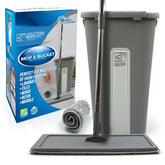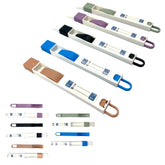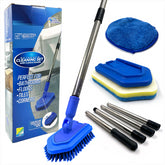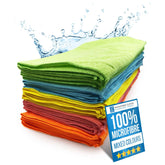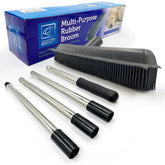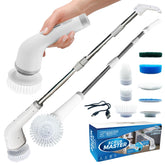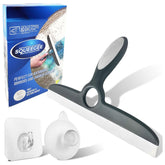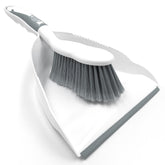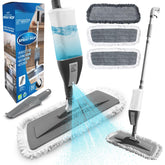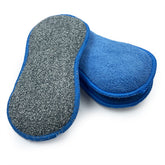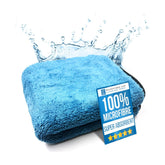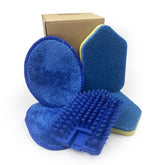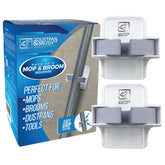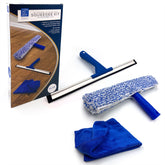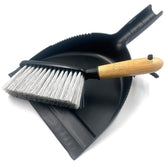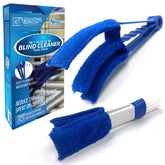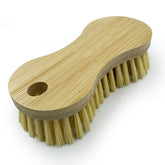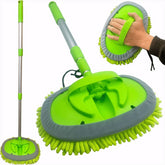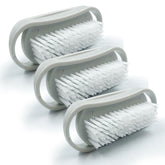5 Most Asked Cleaning Questions on Google
With many of us spending more time at home since the pandemic it’s raised a lot of questions when it comes to cleaning. It’s definitely been prioritised the cleanliness of our homes to make sure germs aren’t lingering around and causing sicknesses. Since this google have noticed more questions being asked than others such as ‘how to clean your oven’. This is our responses to the top 5 questions that have been asked recently on google…
- How to Clean Your Oven and How Often
There are 3 telltale signs your oven may be overdue for a deep clean and scrub, firstly is it’s general all over appearance… Is there crust at the bottom? Is the door covered in splatters from grease and oil? Secondly, the smell. When you turn on your oven is there a distinct odour that appears that’s making you scrunch your nose? This means there may be lingering food, grease or grime inside. And lastly, smoke. A clean oven shouldn’t realise puffs of smoke when opened or solder, so this can also show it’s now time for you to finally clean it.
If these telltales aren’t present however, it’s said depending how often you have to clean your oven depends on it’s use. For those who cook every day and regularly rely on the oven it’s best to clean at least every 3 months, but for those who use it rarely every 6 months should be more than suffice.
So…. Now the cleaning. Firstly remove anything inside the oven such as racks, grills etc, also if you’re wanting to save mopping the floor maybe put down a towel or some newspaper to catch any drips that might happen. Spray or smear whichever cleaning product you have picked to clean with (personally for me when I have the tougher grease I use The Pink Stuff Paste). Make sure you cover the entirety of the oven including back, sides, door, corners and crevices, but of course don’t spray or apply anything to the heading elements of your oven. Once you’ve applied your solution let this sit for a few minutes or whatever the spray time tells you to wait, we’d say on average 15-30 minutes.
Whilst waiting for the solution to seep, spray down your oven racks and grills using the same product and place into a large plastic bag with a tie (bin bags will work) and leaves these to soak as well for the same time. I find oven pride especially good to use for these.
Now that the time has passed take a damp microfibre cloth or any other cleaning products you have to use and wipe down all the surfaces in the oven. When it comes to the tougher stained areas I always opt for the easy grip sponge cleaner to use as it’s got a slightly abrasive sponge without the risk of scratches and also has a handle so you’re not having to directly touch the cleaning solution with your hand. Be sure to wipe over every crack so that you aren’t leaving any cleaning solution or grime/dirt in your oven.
Remove the racks from your plastic bag and rinse these down with hot soap water, it’s probably easiest using your shower head over the bath for this. Again use an abrasive tool to make sure you remove all the tough stains and crusts. Dry your racks and place them back in the oven.
Job done!
- How to Clean White Shoes
I think it’s safe to say the majority of us own a pair of white shoes in some description, whether it be leather or canvas. Unfortunately it’s not just a case of putting them in the washing machine to clean as this can cause more harm than good. Whilst there are different specific methods for cleaning different types of shoes, with all materials you will need to start off with a toothbrush and microfibre cloth. Start by using the toothbrush to remove any larger bits of dirt or mud and the microfibre cloth to wipe down. What solution you use with this method depends on the material entirely. For example you would use baking soda and white vinegar for canvas where as leather just warm soapy water.
- How to Clean a Cast Iron Skillet
Probably one of our favourite things in the kitchen, the skillet will work it’s hardest to what you need it to. It has great heat distribution, a non stick surface, can last for years and the best bit is they’re not as difficult to clean as you might think… It’s three easy steps, rinse, dry and oil. A few dos and don’ts before we start, when it comes to maintaining a seasoned skillet you really should be cleaning directly after cooking to avoid rust and ruining its non stick surface and never use strong solutions or scouring products like Brillo pads or even dishwashers to clean it.
Now onto the cleaning… Some hot water and a good scrub is all you really need to clean your skillet. Place it (still warm from the stove) into your sink and rinse with hot water whilst rubbing it down with a soft sponge. Keep doing this until the water runs clear and all grease and food has been removed then wipe down with a clean soft cloth making sure it’s thoroughly dry. Once completely dry, ice a paper towel or microfibre cloth to smear a thin layer of cooking oil onto the interior of the skillet. This helps restore it’s sheen and revamps its qualities. However, be sure you don’t over oil this surface as it can make it sticky and dull the non stick applications.
If your pan has been a little unloved and there are some stuck on bits from cooking, grab some kosher salt (yes really) and a wet soft sponge to remove the tougher bits of food and rusty areas. The salt will act as an abrasive tool which is mild enough to not cause damage but can gently buff away any of those tougher cleaning areas. Again, once done rinse under warm water dry thoroughly and coat with oil.
- How to Clean Carpets
Carpets help create a warm ambience to your home by adding colour, pattern and texture. However, just vacuuming your carpets isn’t actually cleaning them fully, yes vacuuming removes dirt, debris and hair but you need to give your carpets a deep clean at least once a year to keep them looking new. It’s essential as well to do this as carpets take so much abuse from shoes, pets, and to extend the life on any type of carpet.
So how do we make sure your carpet is thoroughly cleaned? First do make sure you go over it with a vacuum to collect the larger dust particles and make sure you overlap your strokes. Secondly grab a rubber bristled broom and sweep over the carpet, making sure to drag the room rather than push as this won’t succeed the desired effect. This broom will collect any hair or particles that are more entangled into your carpet fibres and will also bring the pile of your carpet up making it look newer and fresher. Once this is one, apply a carpet stain removal cleaner to any tough well set stains and blot with a clean cloth or strong paper towel.
If you want to go the extra mile, maybe look at hiring a carpet-cleaning machine as well!
- How to Clean Your Dishwasher
Dishwashers tend to be the appliance we forget to clean mainly because it’s job is to… well, clean. But like all appliances, it needs some love and attention to make sure it keeps working to a high standard. Thankfully this is more of a monthly job rather than weekly.
First things first, the exterior. No doubt you’ve created fingerprints, smudges and splashes against the exterior whilst putting dirty pans away. All you need to do for this is grab a small bristled brush, like a grout brush and some hot soapy water and scrub at all the nooks and crannies where there’s buildup of food particles and grime. With the front of your dishwasher take the hot soapy water and give it a wipe down with a microfibre cloth just to get rid of all the smudges and fingerprints.
So, when it comes to the interior of your dishwasher first make sure you have removed any lingering food pieces or debris from the bottom of your dishwasher, particularly around the drain (for me it always seems to be pasta!) Once you have removed all that you can put your dishwasher on a short cycle empty. I recommend putting a cup of white vinegar in whilst doing this cycle and having it on the hottest water setting to disinfect the inside whilst on it’s cycle.


